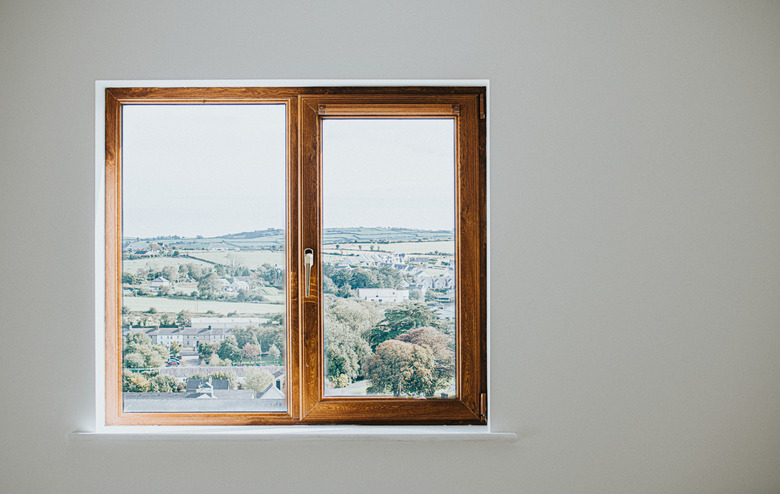How To Remove Black Mold From My Wood Window Trim
Mold occurs in moist areas, so black mold on your wood window trim indicates there's too much moisture inside your home. After you remove the mold, you should take steps as soon as you can to reduce your home's interior moisture levels.
Things Needed
-
Nonammonia detergent
-
Bucket
-
Scrub brush or cleaning cloth
-
Chlorine bleach
How to Remove Black Mold From Wood Window Trim
1. Clean
the Mold
Mix nonammonia detergent with hot water in a bucket and use a scrub brush or cloth to scrub the mold off the wood window trim. If you use a scrub brush, test it in a small area first to see if it scrapes off the paint. Rinse off the soap using a clean cloth and let the woodwork dry completely.
2. Disinfect the Wood Window Trim
Mix 1 part chlorine bleach with 10 parts water. Apply the solution to the window trim with a cloth and wipe down the area. Leave the bleach solution on the trim and allow the area to dry.
3. Apply Mildew-Resistant Paint
Consider applying mildew-resistant paint on the trim if you have a persistent problem with mold on wood window trim. Mildew-resistant paint contains fungicides that will stop mold growth on painted surfaces, such as window frames.
Warning
When working around mold or bleach, you should wear protective clothing, such as long sleeves, rubber gloves, and eye goggles. You should also use an N-95 respirator.
Do not use mold- or mildew-resistant paint on surfaces on which children might chew. The paints can be harmful if ingested.
Reduce Moisture to Prevent Mold
Reduce Moisture to Prevent Mold
The best way to prevent mold on wood window trim is to keep the wood dry. Reducing the amount of moisture in your home will reduce the places where mold spores will settle and grow. There are many steps you can take to limit the amount of moisture in your home.
A damp basement is a common cause of too much moisture, so reducing basement dampness will help prevent mold in your home. Causes of damp basements include unventilated crawl spaces and cracks in the walls that let in water. You may want to consult a professional if your home has these issues.
Other steps you can take to reduce moisture in your home include:
- Using an air conditioner or dehumidifier to reduce moisture.
- Using exhaust fans to vent out moisture from cooking on the
stove top or from showers in the bathroom. - Venting the clothes dryer outside the house.
- Opening windows and using fans to circulate the air and bringing in air when the air outdoors is drier than it is indoors.
